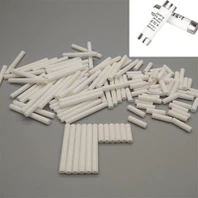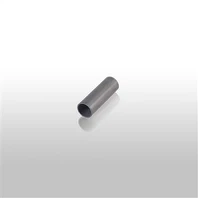Q: What is a ceramic substrate?
A: A ceramic substrate is a type of material used as a base or support for electronic components and circuits. It is typically made of a ceramic material, such as alumina (aluminum oxide) or aluminum nitride, that offers excellent thermal conductivity and electrical insulation properties.
Q: What are the advantages of ceramic substrates?
A: Ceramic substrates have several advantages, including high thermal conductivity, excellent electrical insulation, good mechanical strength, and compatibility with high-temperature applications. They also provide stable performance over a wide range of operating conditions, are chemically inert, and have low dielectric losses.
Q: What are the applications of ceramic substrates?
A: Ceramic substrates are commonly used in various electronic and electrical applications, including power modules, semiconductor packaging, LED (light-emitting diode) devices, hybrid circuits, sensors, and microwave components. They are also used in industries such as automotive, aerospace, telecommunications, and medical devices.
Q: What are the different types of ceramic substrates?
A: The most common types of ceramic substrates include alumina (Al2O3) substrates, aluminum nitride (AlN) substrates, and silicon carbide (SiC) substrates. Each type has its own unique properties and is suitable for specific applications.
Q: How are ceramic substrates manufactured?
A: Ceramic substrates are typically manufactured using a process called thick film or thin film deposition. In thick film deposition, a ceramic slurry containing the desired material is screen-printed onto the substrate and then fired at high temperatures to form a thick layer. Thin film deposition involves depositing thin layers of ceramic material onto the substrate using techniques such as physical vapor deposition (PVD) or chemical vapor deposition (CVD).
Q: What considerations should be taken when using ceramic substrates?
A: When using ceramic substrates, it is important to consider factors such as thermal expansion mismatch with other components, appropriate electrical insulation, mechanical stress, and the specific operating conditions of the application. Compatibility with bonding and sealing materials and the need for surface treatments or coatings should also be taken into account.
Q: Can ceramic substrates be customized?
A: Yes, ceramic substrates can be customized to meet specific requirements. This can include variations in size, shape, thickness, and specific material compositions to optimize their performance for a particular application.
Q: Are there any limitations or drawbacks to using ceramic substrates?
A: While ceramic substrates offer many advantages, they do have some limitations. These include higher cost compared to other substrate materials, brittleness, and the potential for cracking or damage under mechanical stress. They may also have limitations in terms of complex geometries or extremely high-frequency applications.
Q: How do ceramic substrates compare to other substrate materials?
A: Ceramic substrates offer advantages over other substrate materials such as printed circuit boards (PCBs) or organic substrates in terms of higher thermal conductivity and better electrical insulation properties. However, they may be more expensive and have limitations in terms of flexibility and certain manufacturing processes.
I hope this helps! Let me know if you have any more specific questions.




